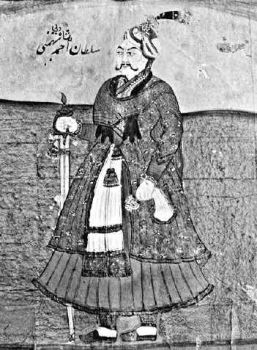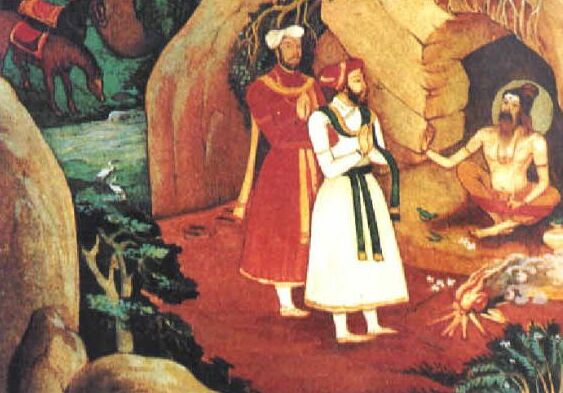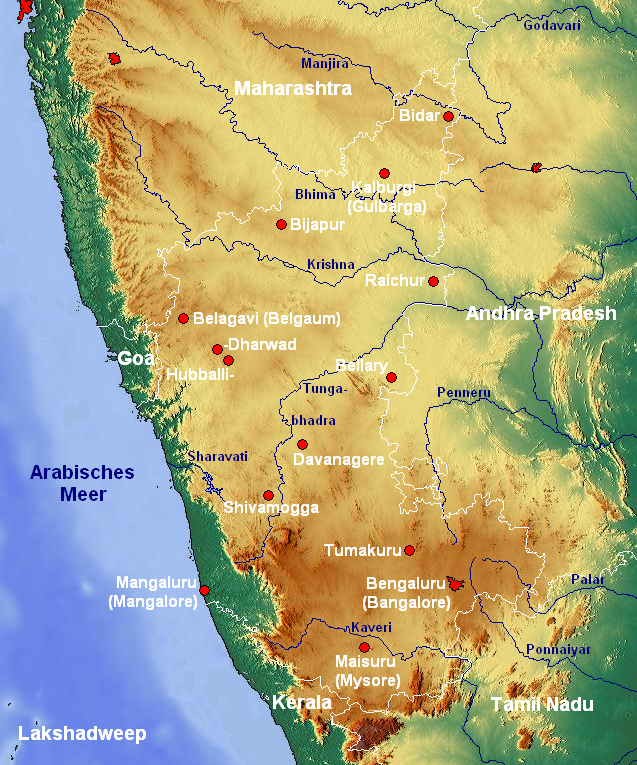|
Sixth Bahmani–Vijayanagar War (1423)
The siege of Vijayanagar or Bahmani–Vijayanagar war of 1423 was a military campaign by the Bahmani Sultanate in the Deccan plateau, led by Ahmad Shah I Wali, against the Vijayanagara Empire, Vijayanagar empire, ruled by Veera Vijaya Bukka Raya, Vira Vijaya Bukka Raya III, beginning in 1423 in present-day Karnataka. The campaign resulted in a victory for the Bahmanis, leading to the recapture of all of the Sultanate's territories that had fallen into the hands of Vijayanagar during the war of 1420. After their triumph in the Bahmani–Vijayanagar War (1417–1419), war with the Bahmanis in 1420, the Vijayanagar empire carried out a massacre of the civilian population, violating the treaty signed between them during the Bahmani–Vijayanagar War (1362–1367), war of 1367. Following the coronation of Ahmad Shah Wali after the death of his brother Taj ud-Din Firuz Shah, Tajuddin Firuz Shah, Ahmad sought revenge for his brother's defeat by assembling an army. Vira Vijaya, the king ... [...More Info...] [...Related Items...] OR: [Wikipedia] [Google] [Baidu] |
Vijayanagar
The Vijayanagara Empire, also known as the Karnata Kingdom, was a late medieval Hindu empire that ruled much of southern India. It was established in 1336 by the brothers Harihara I and Bukka Raya I of the Sangama dynasty, belonging to the Yadava clan of Chandravamsa lineage. The empire rose to prominence as a culmination of attempts by the southern powers to ward off Muslim invasions by the end of the 13th century. At its peak in the early 16th century under Krishnadevaraya, it subjugated almost all of Southern India's ruling dynasties and pushed the Deccan sultanates beyond the Tungabhadra-Krishna River doab region, in addition to annexing the Gajapati Empire (Odisha) up to the Krishna River, becoming one of the most prominent states in India. The empire's territory covered most of the lands of the modern-day Indian states of Karnataka, Andhra Pradesh, Tamil Nadu, Kerala, Goa, and some parts of Telangana and Maharashtra. The empire lasted until 1646, although its power ... [...More Info...] [...Related Items...] OR: [Wikipedia] [Google] [Baidu] |
Kalaburagi
Kalaburagi, formerly known as Gulbarga, is a city in the Indian state of Karnataka, It is headquarters of eponymous Kalaburagi district and Kalaburagi division, Kalaburagi city is governed by a Municipal Corporation, It is called a Sufi city. It has famous religious structures, like the Hazrath Khwaja Banda Nawaz Dargah, the Sharana Basaveshwara Temple and the Buddha Vihar. It also has a fort built during the Bahmani rule, Other Bahmani monuments include the Haft Gumbaz (seven domes together) and the Shor Gumbad. Kalaburagi has the world's largest cannon, Kalaburagi has a few architectural marvels built during the Bahamani Kingdom rule, including the Jama Masjid in the Kalaburagi Fort. Kalaburagi houses the circuit bench of the High Court of Karnataka. Under the name Monuments and Forts of the Deccan Sultanate, Several buildings in the city and with others in the region were put by UNESCO on its "tentative list" of World Heritage Site in 2014. The city is ranked among ... [...More Info...] [...Related Items...] OR: [Wikipedia] [Google] [Baidu] |
Muslim World
The terms Islamic world and Muslim world commonly refer to the Islamic community, which is also known as the Ummah. This consists of all those who adhere to the religious beliefs, politics, and laws of Islam or to societies in which Islam is practiced. In a modern geopolitical sense, these terms refer to countries in which Islam is widespread, although there are no agreed criteria for inclusion. The term Muslim-majority countries is an alternative often used for the latter sense. The history of the Muslim world spans about 1,400 years and includes a variety of socio-political developments, as well as advances in the arts, science, medicine, philosophy, law, economics and technology during the Islamic Golden Age. Muslims look for guidance to the Quran and believe in the prophetic mission of the Islamic prophet Muhammad, but disagreements on other matters have led to the appearance of different religious schools of thought and sects within Islam. The Islamic conquests, wh ... [...More Info...] [...Related Items...] OR: [Wikipedia] [Google] [Baidu] |
Deva Raya I
Deva Raya I (reigned 5 November 1406 – 25 February 1423) was an Emperor of the Vijayanagara Empire (of the Sangama Dynasty). After Harihara II died, there was a dispute among his sons over succession, in which Deva Raya I eventually emerged victor. He was a very capable ruler noted for his military exploits and his support to irrigation works in his empire.Kulakarṇī, Nayeem, De Souza (1996), p.106 He modernized the Vijayanagara army by improving the cavalry, employed skilled archers of the Turkic clans and raised the fighting capacity of his bowmen and imported horses from Arabia and Persia.Bowman,(2013) p.271 The Italian traveler Niccolo Conti, who visited Vijayanagara 1420, described Deva Raya I thus: "In this city, there are 90,000 men fit to bear arms... their king is more powerful than all the kings of India".Chopra, Ravindran and Subrahmanian (2003), p.31 Conti also noted that the royal city had grown to a circumference of 60 mi.Kamath (1980), p.163 Deva Raya ... [...More Info...] [...Related Items...] OR: [Wikipedia] [Google] [Baidu] |
Bahmani–Vijayanagar War (1398)
The Bahmani–Vijayanagar War (1398) of 1398 marked the military conflicts between the Bahmani Sultanate under Tajuddin Firuz Shah and the Vijayanagar empire under Harihara II. After the initial Bahmani-Vijayanagar War in 1367, the two kingdoms enjoyed a period of peace for thirty years. However, in the late fourteenth century, they once again found themselves engaged in major warfare in the Deccan region. The war was ignited by the invasion of Raichur by Prince Bukka and Harihara II, who capitalized on the internal conflicts within the Bahmani Sultanate's northern region. Firuz Shah faced a significant disadvantage as most of his army was deployed in the north. A flood in the Krishna River further complicated matters, separating the two armies on opposite banks. Seizing the opportunity, Qazi Sirajuddin, a Bahmani officer, infiltrated the Vijayanagar camp as an assassin, assassinating the Prince and causing chaos. Exploiting the ensuing disorder, Firuz Shah launched an attack ... [...More Info...] [...Related Items...] OR: [Wikipedia] [Google] [Baidu] |
Bukka Raya I
Bukka Raya I (reigned 1356–24 February 1377) was an emperor of the Vijayanagara Empire from the Sangama Dynasty.Phrof A V Narasimha MurthyRare Royal Brothers: Hakka and Bukka He was a son of Bhavana Sangama, claimed by Harihara II to be of Yadava clan of Lunar dynasty, Chandravamsa Kshatriya Background The early life of Bukka as well as his brother Harihara I, Hakka (also known as Harihara I) are relatively unknown and most accounts of their early life are based on various theories (see the Vijayanagara Empire article for more extended descriptions of these). The Father Heras theory states that Sangama brothers had a great devotion to the Karnataka deities like Shiva, Virupaksha and Keshava. They signed only in Kannada letters like "Sri Virupaksha" in Sanskrit, Telugu language, Telugu, and Tamil language, Tamil records. Dr. Desai quotes that Firishta, Ferishta called the emperors as "Roise of Carnatic". Carnatic means "Karnataka" hence shows their origin from Karnataka. T ... [...More Info...] [...Related Items...] OR: [Wikipedia] [Google] [Baidu] |
Mohammed Shah I
Mohammed Shah I (reigned 1358–1375) was the second ruler of the Bahmani Sultanate, a late medieval kingdom of India. He succeeded his father Ala-ud-Din Bahman Shah. He initiated the Bahmani–Vijayanagar War with two neighboring kingdoms, the Vijayanagara and the Warangal under Kapaya Nayaka, and successfully subjugated them. He was succeeded by his son Alauddin Mujahid Shah.Bhattacharya, Sachchidananda. ''A Dictionary of Indian History'' (Westport: Greenwood Press, 1977) p.653 Reign When Mohammad inherited the newly born sultanate from his father Alauddin, the land was still infested with thieves and robbers. As such he spent the entire part of his reign in establishing law in his land. He ordered his governors to never give refuge to anyone who defied his authority. This campaign was successful and at the end of his reign, the land became peaceful and law-abiding. He also sat on the takht-ē-firoza or The Turquoise throne which was gifted to him by Kapaya Nayaka. ... [...More Info...] [...Related Items...] OR: [Wikipedia] [Google] [Baidu] |
Raichur Doab
The Raichur Doab is a Doab, in this case the triangular region of land in the southern Indian states of Telangana and Karnataka lying between the Krishna River and its tributary, the Tungabhadra River. The doab is named for the town of Raichur in the Raichur District. The Raichur Doab is considered to be very fertile because of the sediments carried by Krishna and Tungabhadra rivers. The doab includes Raichur district and Koppal district in Karnataka, and Gadwal district in Telangana. Some areas of Raichur doab also called as Nadigadda region became a part of Telangana during Andhra Pradesh Reorganisation Act in 2014.Those areas are Gadwal, Alampur and Maganoor. Gadwal is one of the 31 districts of Telangana State. Resources Hatti Gold Mines: Situated in Hatti of Lingasugur taluk, is currently the only working gold mine in India. Evidently, it is one of the oldest mines dating back to Pre Ashokan times. During late 19th century, the gold mines were rediscovered. Raichur ... [...More Info...] [...Related Items...] OR: [Wikipedia] [Google] [Baidu] |
Deva Raya II
Deva Raya II (reigned 10 February 1423 – 24 May 1446) was an emperor of the Vijayanagara Empire. He is considered by many as the greatest of the Sangama dynasty rulers, he was an able administrator, warrior, and scholar. He authored well-known works in Kannada language, Kannada (''Sobagina Sone'' and ''Amaruka'') and Sanskrit language, Sanskrit (''Mahanataka Sudhanidhi'').Kamath (1980), p.164 He was patron to some of the most noted Kannada poets of the medieval period, including Chamarasa and Kumara Vyasa,Sastri (1955), pp.363-364Rice E.P. (1921), p.68, p.70 the Sanskrit poet Gunda Dimdima, and the noted Telugu language poet Srinatha, whom the king honored with the title ''Kavisarvabhauma'' ("Emperor of poets").Kamath (1980), p.163 He supported development in secular literature as well as the noted South Indian mathematician Parameshvara, from the Kerala school of astronomy and mathematics in his empire. According to the historian Sastri, Deva Raya II had the title ''Gajab ... [...More Info...] [...Related Items...] OR: [Wikipedia] [Google] [Baidu] |
Bidar
Bidar ( ) is a city and headquarters of the Bidar district in Karnataka state of India. Bidar is a prominent place on the archaeological map of India, it is well known for architectural, historical religious and rich heritage sites. Picturesquely perched on the Deccan plateau, the Bidar fort is more than 500 years old and still standing strong. According to the book "Bidar Heritage" published by the state ''Department of Archaeology, Museums and Heritage'', of the 61 monuments listed by the department, about 30 are tombs located in and around Bidar city., explaining its nickname, "City of Whispering Monuments". The heritage sites in and around Bidar have become the major attraction for film shooting in recent years, with Bollywood making visits apart from Kannada film industry Bidar is home for the second biggest Indian Air Force training centre in the country. The Bidar Airport, IAF Station Bidar is used for advanced jet training of prospective fighter pilots on BAe Hawk air ... [...More Info...] [...Related Items...] OR: [Wikipedia] [Google] [Baidu] |
Turquoise Throne
The Turquoise Throne or Takht-i-Firoza (Hindustani language, Hindustani: ''Takht-e-fīrozā'', Telugu language, Telugu: ') was a famous jewel-studded royal throne of the Bahmani Sultanate, Bahmani Sultans of Deccan in India. It was a gift by Musunuri Nayaks, Musunuri Kapaya Nayaka, then king of Warangal (or ''Telingana''), during the Bahmani–Vijayanagar War (1362–1367), Bahmani-Vijayanagar War, where the Bahmanis defeated the latter. Over some time, this throne became one of the most important icons of the Bahmani royalty and heritage. Origin of turquoise throne Political situation in Deccan in early 1320s The Tughluq empire covered most of India at its height in the 1320s but for only a short time. The Deccan region slipped out of its hands within a few decades beset by rebellions. Two kingdoms arose from these developments: one being the Bahmani Sultanate founded by Alauddin Hasan Gangu Bahman Shah or Zafar Khan, and the other the Telingana kingdom at Warangal under the Musunur ... [...More Info...] [...Related Items...] OR: [Wikipedia] [Google] [Baidu] |
Banjara
The Banjara are nomadic tribes found in India. Etymology The Gor usually refer to themselves as ''Banjaras'' and outsiders as ''Kor'', but this usage does not extend outside their own community. A related usage is ''Gor Mati'' or ''Gormati'', meaning "own people". Motiraj Rathod believes that the community became known as ''banjara'' from around the fourteenth century AD and previously had some association with the ''Laman'', who claim a 3,000-year history. Irfan Habib believes the origin of ''banjara'' lies in the Sanskrit word variously rendered as ''vanij'', ''vanik'', and ''banik'', as does the name of the Bania caste, which historically was India's "pre-eminent" trading community. However, according to B. G. Halbar, the word ''banjara'' is derived from the Sanskrit ''vana chara''. The group is known by different names in different parts of the country, including Gor Banjara, Baladiya, Gor, Gour Rajput, Rajput Banjara, Ladaniya, Labana, Nayak, etc. Despite the community ... [...More Info...] [...Related Items...] OR: [Wikipedia] [Google] [Baidu] |






